
The OWC Atlas Dual SD Reader is a twin-slot card reader, using a USB Type-C connection. This device boasts two SDXC SD 4.0 UHS-II memory card slots for reading SD cards, each delivering a bandwidth of 300 MB/s for simultaneous file reading without any bandwidth bottleneck! Its concurrent file reading and transfer processes enhance efficiency significantly.
OWC Atlas Dual SD Reader Dual Slot Card Reader Specifications:
Certification: CE, UKCA, FCC, VCCI, BSMI, RCM
Warranty: 2-year limited warranty
Shell material: metal shell, plastic top cover and bottom
Interface/connector: USB 3.2 Gen 2 ( 10Gb/s) Type-C, 2x SDXC UHS-II
System Requirements (PC): Windows 10 or above, Linux, Chrome OS
System Requirements (Mac): macOS 10.11 or above, iPadOS 13 or above
Product Dimensions: (LxWxH) 8 x 8 x 2.3 cm
Product Weight: 140g
OWC Atlas SD Dual-slot Card Reader Unpacking
Today, I unboxed the “OWC Atlas Dual SD Reader” dual-slot card reader introduced by OWC this year. It offers two slots, each capable of reading an SDXC UHS-II memory card concurrently. Each slot delivers a bandwidth of 300 MB/s, totaling a collective bandwidth of 600 MB/s.
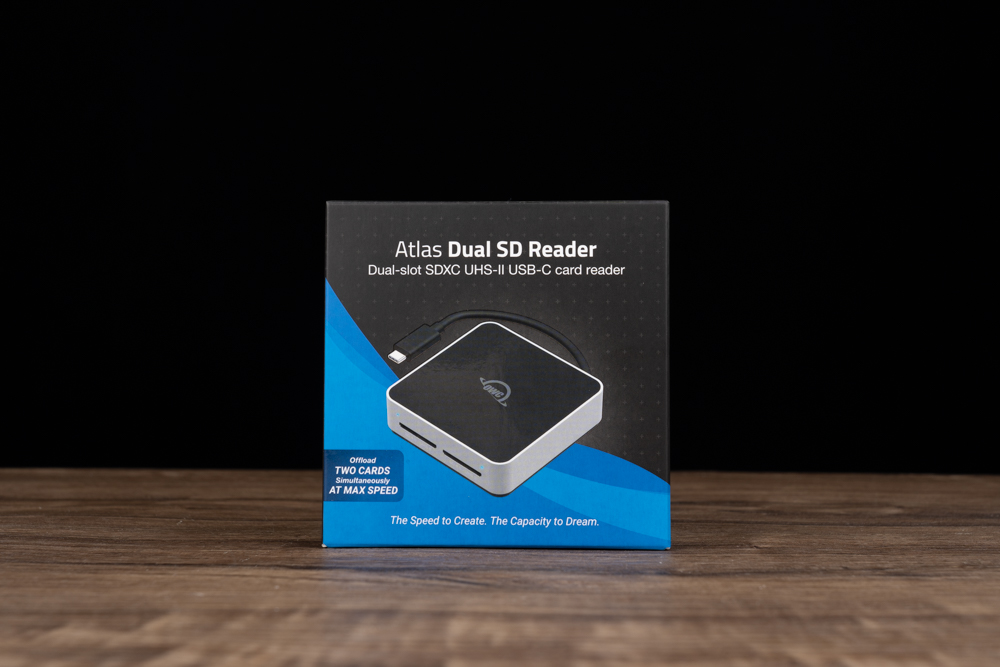
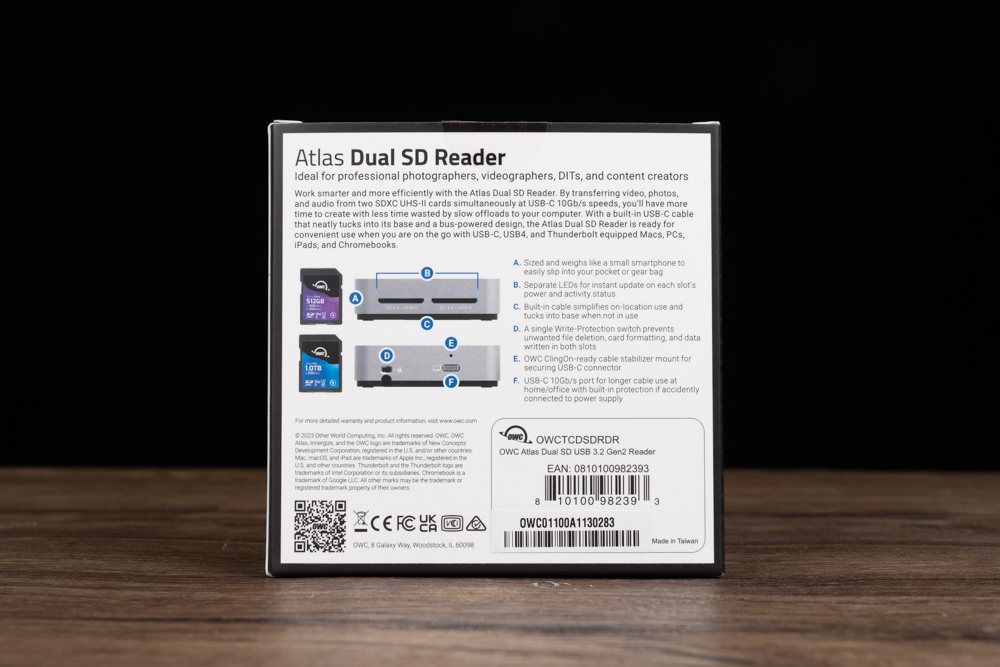
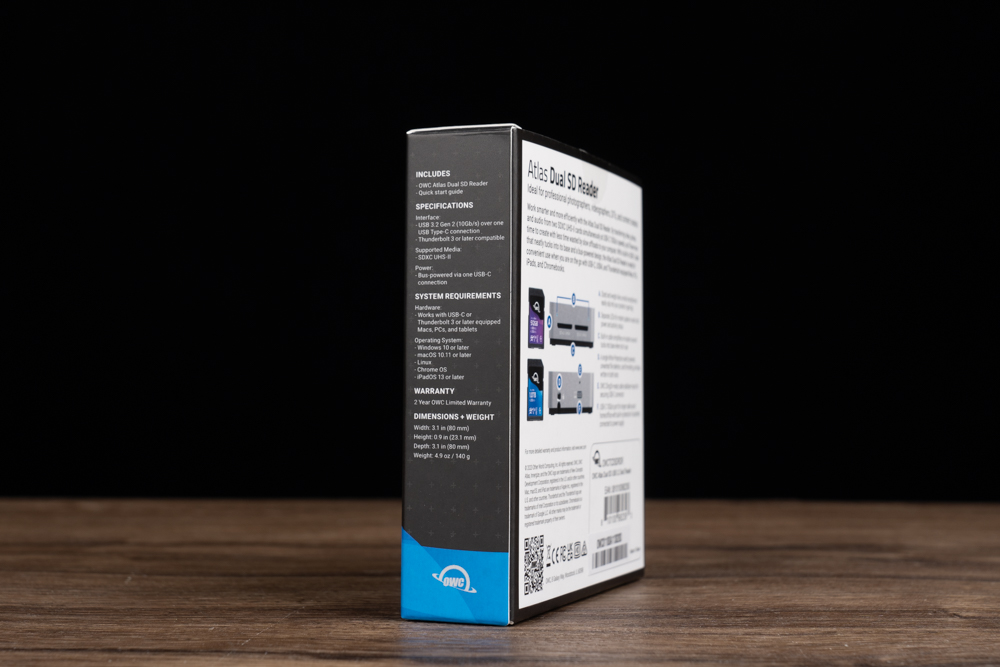
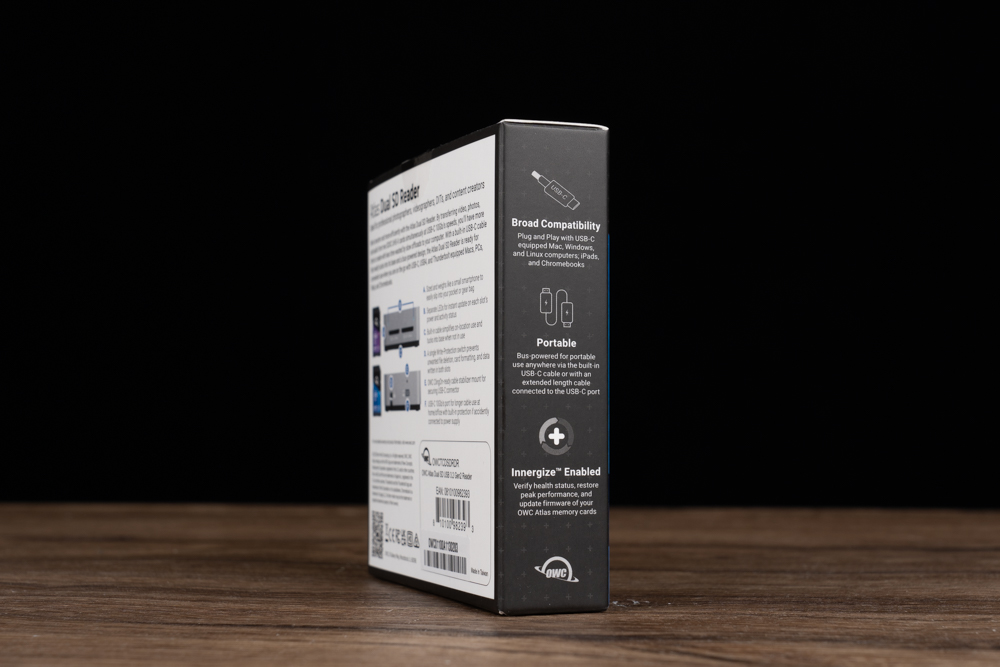
The OWC Atlas SD dual-slot card reader is an ultra-portable device with an 8×8 cm square shape, a thickness of just 2.3 cm, and a feather-light weight of 140g. It’s a valuable tool for professional photographers who frequently travel with laptops, cameras, and other gear, helping to lighten their load.
The sides of the card reader are encased in an anodized metal frame, while the black top cover sporting the OWC logo is crafted from plastic. Consistent with OWC’s reputation for textured product design, the four corners of the reader are rounded to help prevent damage from knocks and bumps.
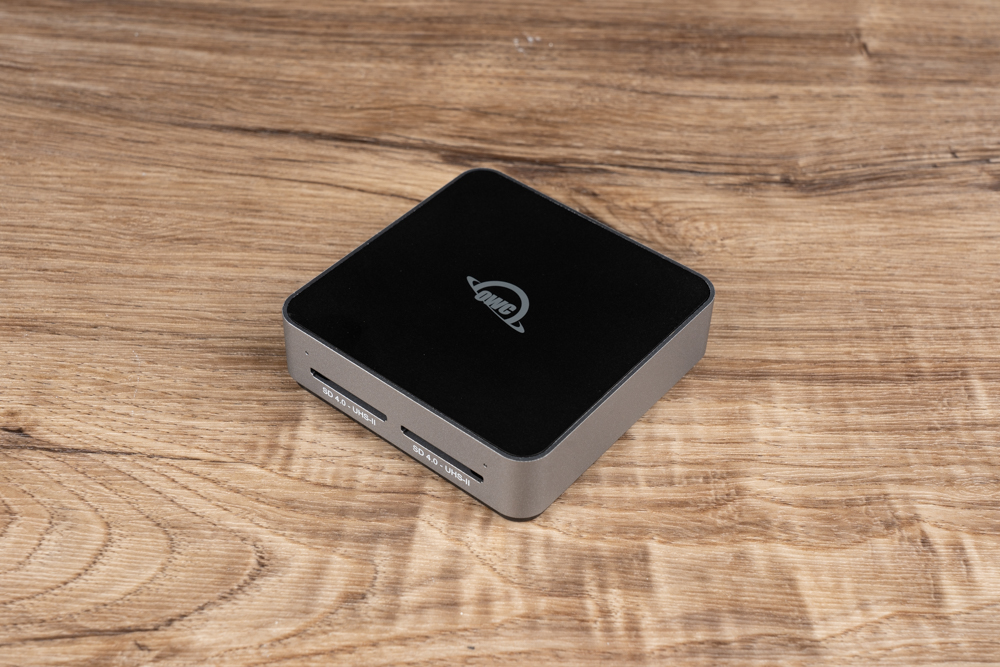
Featuring two SDXC SD 4.0 UHS-II memory card slots, the OWC Atlas SD dual-slot card reader enables users to read two SD cards “simultaneously”. Each slot boasts a transmission bandwidth of 300 MB/s. Therefore, when data from two SD cards need to be transferred to a laptop, using the OWC Atlas SD dual-slot card reader can effectively cut the time in half.
For cameras with dual SD card slots, like the Sony α7 III, it’s common to use one card for saving JPG files and the other for ARW files during a full day of shooting or picture taking. When it comes to transferring files from both SD cards post-shooting, using this card reader is a significant efficiency booster!
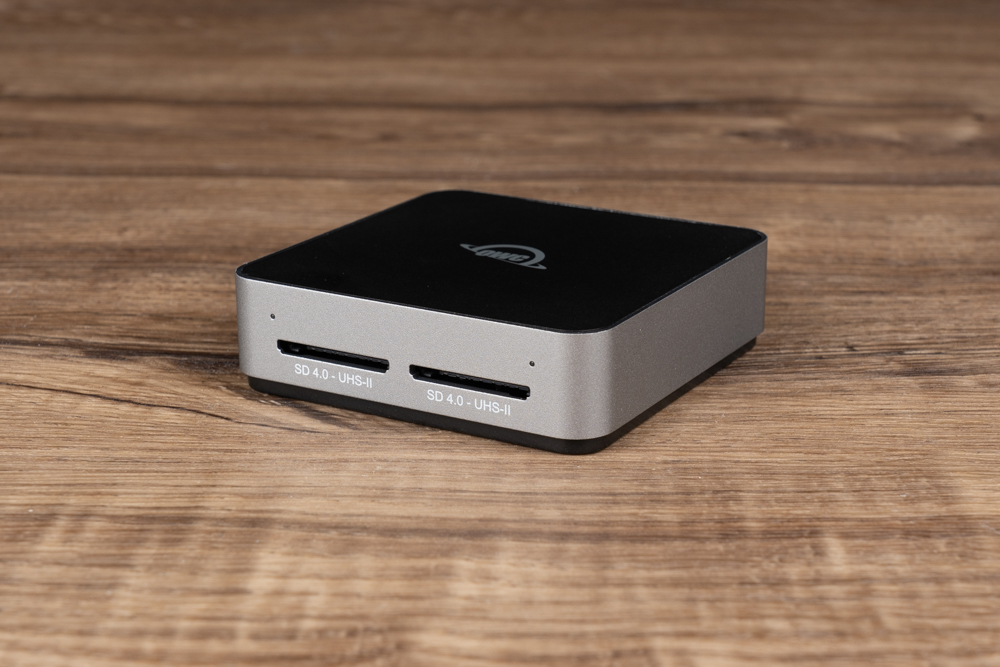
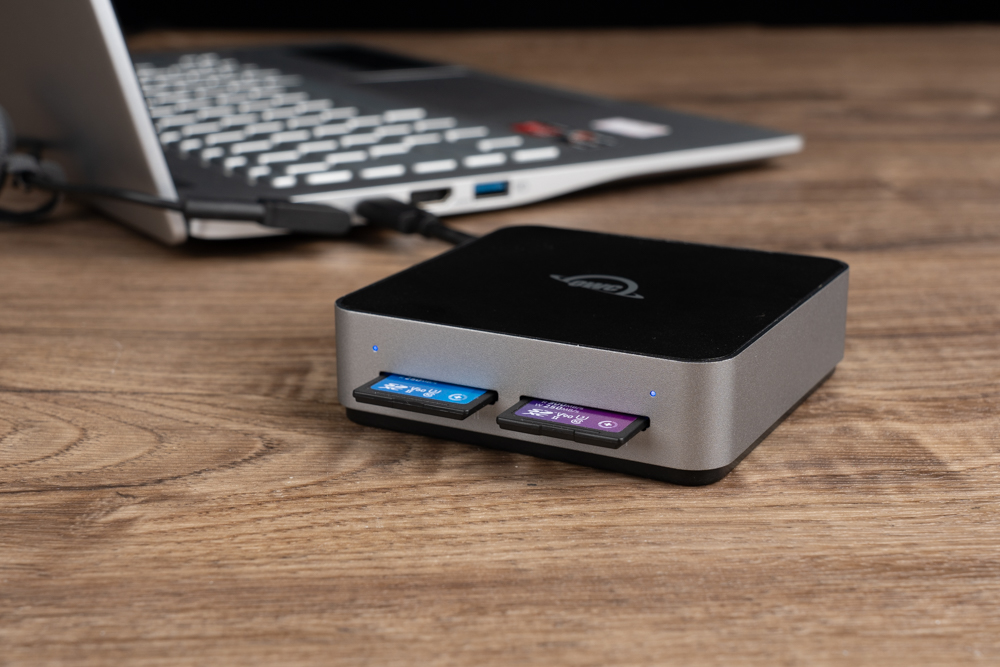
On the rear of the device, there is a physical write protection switch, ensuring protection against unintended overwrites or data deletions. The USB Type-C port is located on the right for the computer connection. If the original cable is too short, other USB Type-C cables can be utilized. This allows the device to connect with any PC, laptop, Mac, iPad, etc., that has a USB (Type-A or Type-C) or Thunderbolt (USB-C) interface.
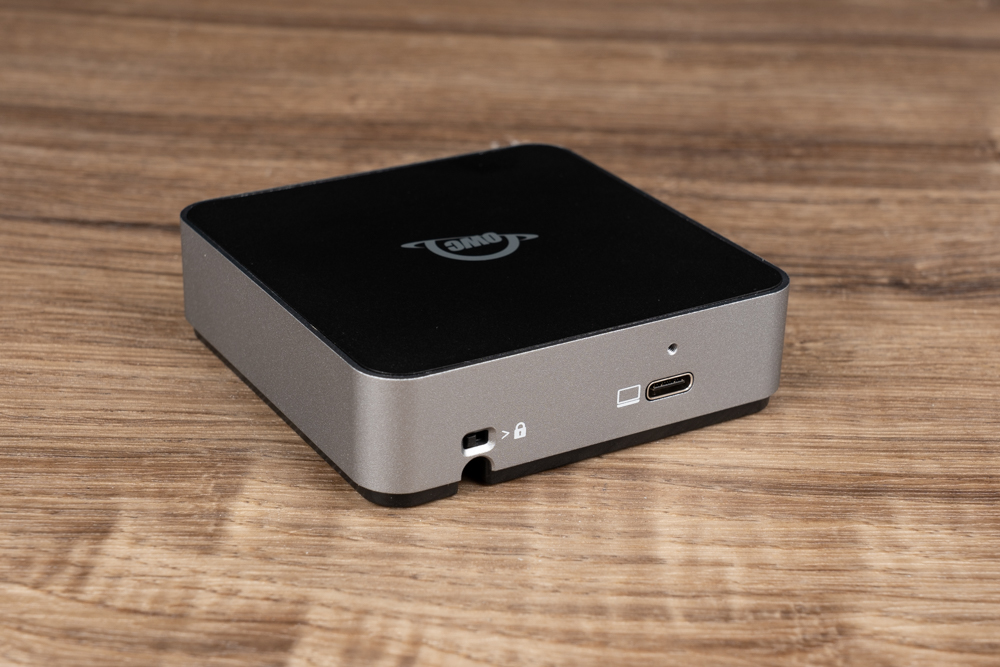
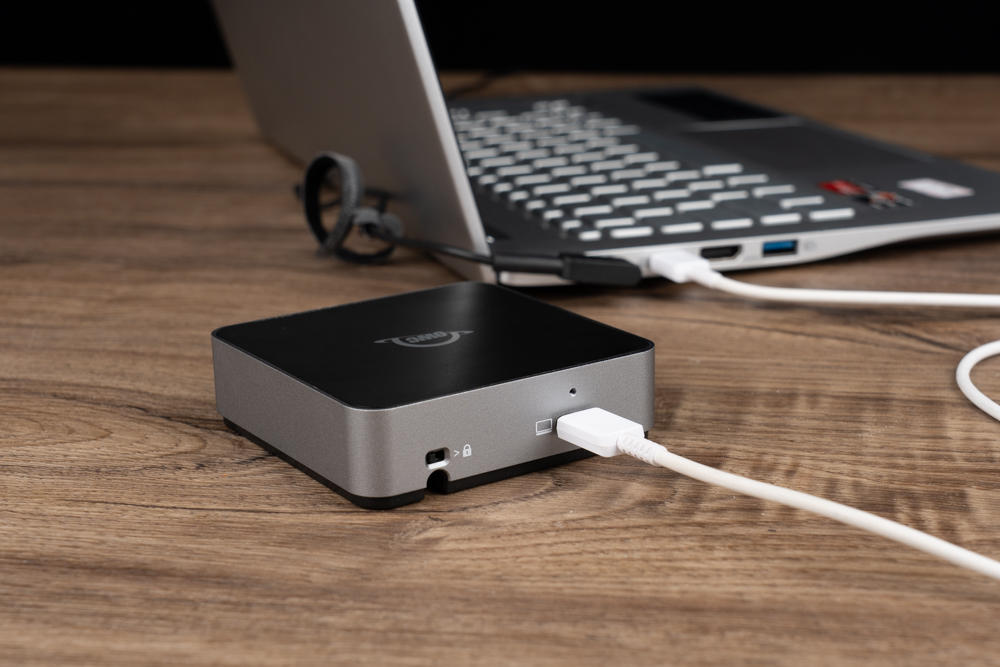
The OWC Atlas SD dual-slot card reader has a concealed cable groove at the bottom, housing a USB 3.2 Gen 2 (10Gb/s) Type-C connection cable. The cable itself isn’t notably long but is perfectly suitable for use with a laptop placed on a desktop.
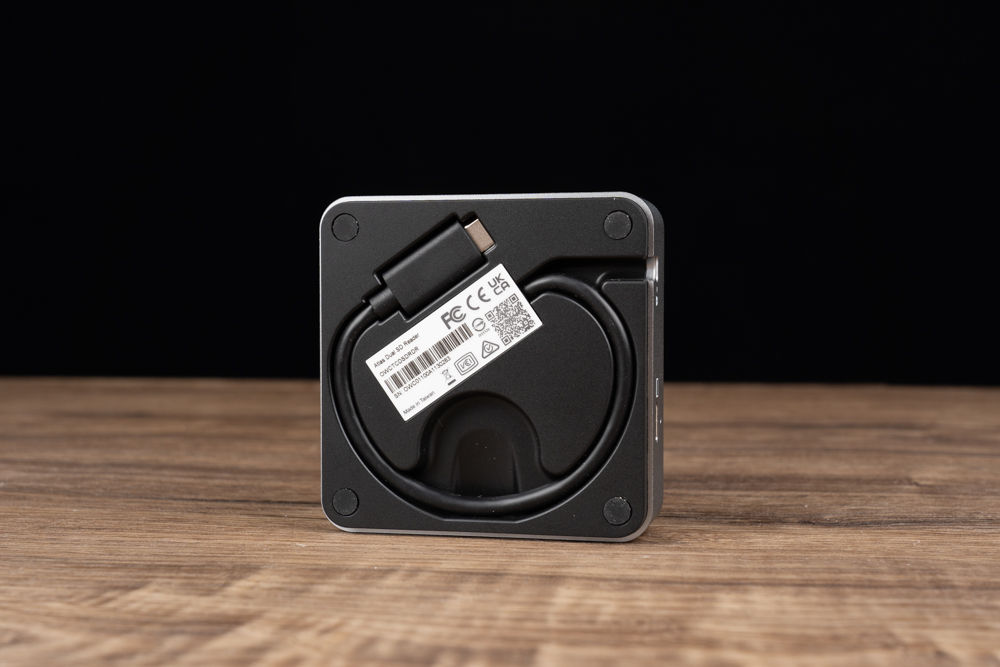
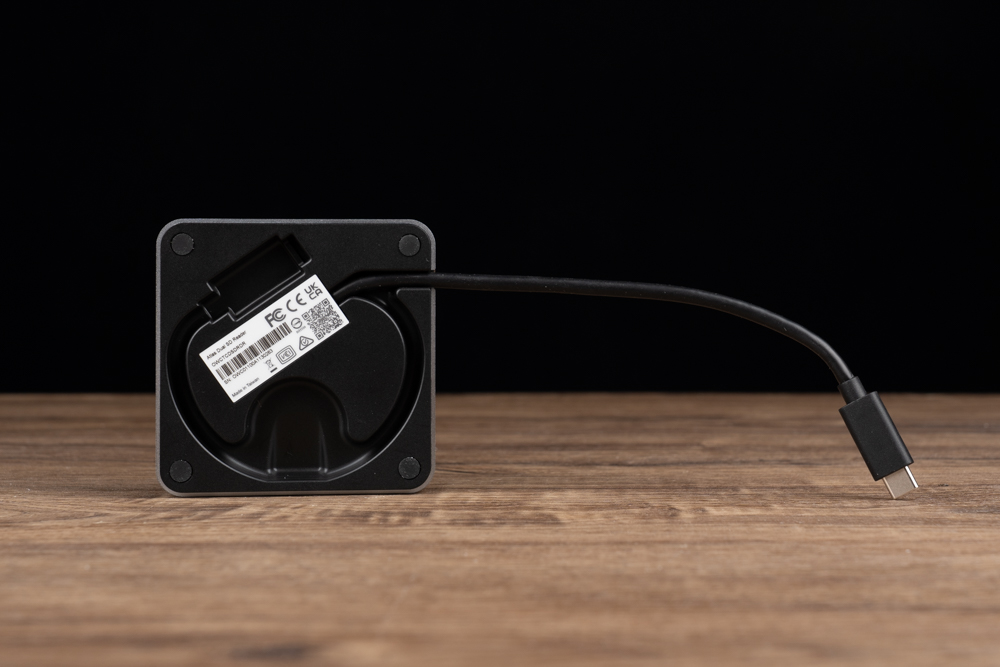
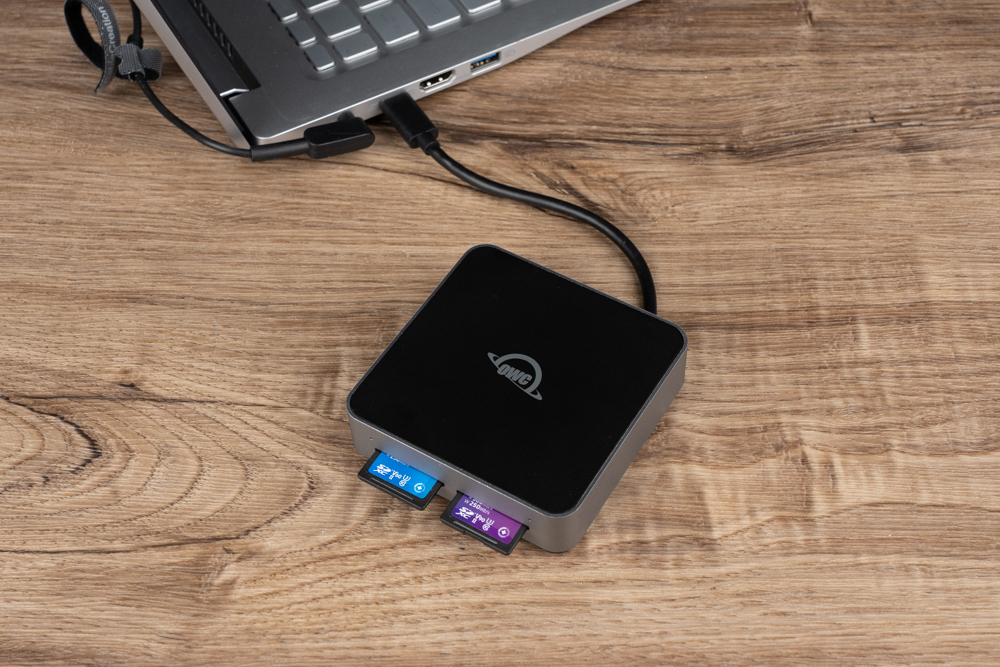
OWC Innergize Software
OWC’s newest free software, “Innergize,” is now officially available. Energize is compatible with various OWC card readers, as well as expansion ports or external storage devices equipped with card reader functions. Essentially, any OWC device with card-reading capabilities can be used in conjunction with Innergize!
Within the software, you can select OWC SD cards individually or concurrently for health checks and data security clearances. For this demonstration, we’ll use the OWC Atlas Pro / Atlas Ultra SD cards previously unboxed on this site. Typically, brand-new SD cards will show a 100% health status, but these two cards indicate a 99% health level due to their non-new state, resulting from multiple performance tests conducted during unboxing.
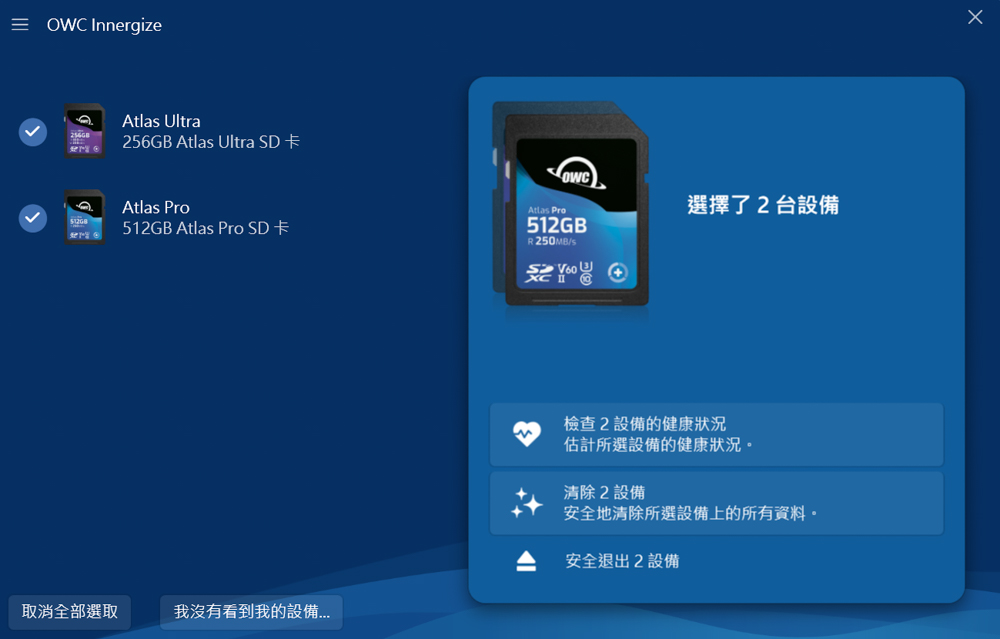
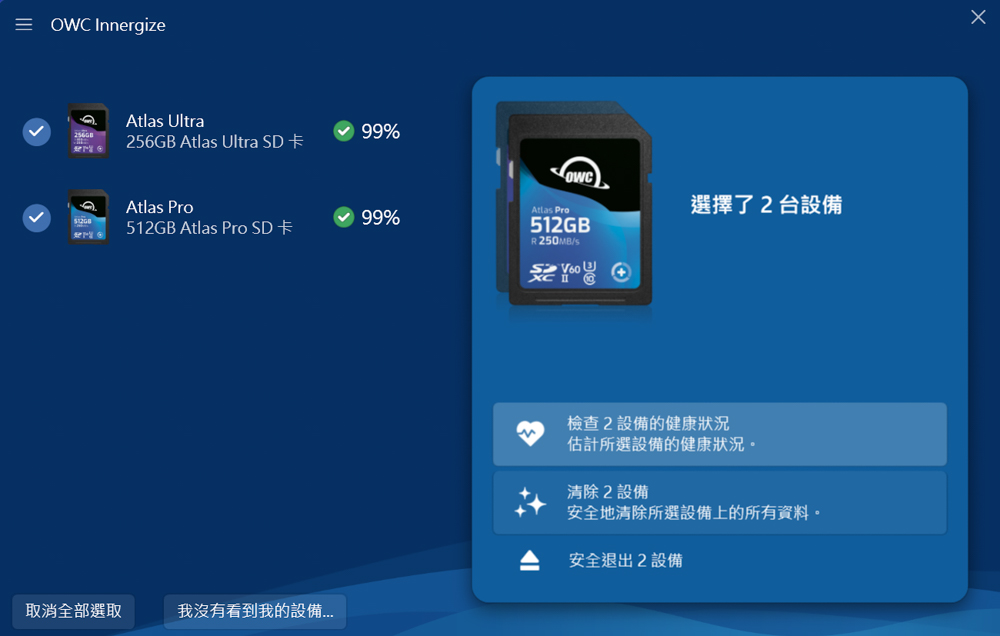
OWC Atlas SD Dual Slot Reader Test
We’re conducting a test using the OWC Atlas SD dual-slot card reader in combination with OWC Atlas Pro 512GB and Atlas Ultra 256GB SD cards. The test platform is powered by the i9 13900K and Z790 VALKYRIE, and the card reader is connected to the motherboard’s USB 3.2 Gen 2×2 Type-C port, ensuring full transmission bandwidth for the card reader.
Test Platform Specifications:
Processor: Intel Core i9 13900K
Cooler: VALKYRIE C480-RGB
Motherboard: BIOSTAR Z790 VALKYRIE (Z79AC208)
Memory: T-FORCE DELTA RGB DDR5 6200 MT/s 16GBx2
Graphics Card: ZOTAC GAMING GeForce RTX 4070 Twin Edge OC
Operating System: Windows 11 Professional Edition 22H2
System Disk: CORSAIR MP600 PRO 1TB Gen4x4 PCIe SSD
Game Disk: GIGABYTE AORUS NVMe Gen4 SSD 2TB
Power Supply: FSP Hydro G PRO ATX3.0 (PCIe5.0) 850W
Card Reader: OWC Atlas SD dual-slot card reader
SD Cards: OWC Atlas Pro 512GB / Atlas Ultra 256GB
After initiating the system, it successfully identifies and reads both SD cards.
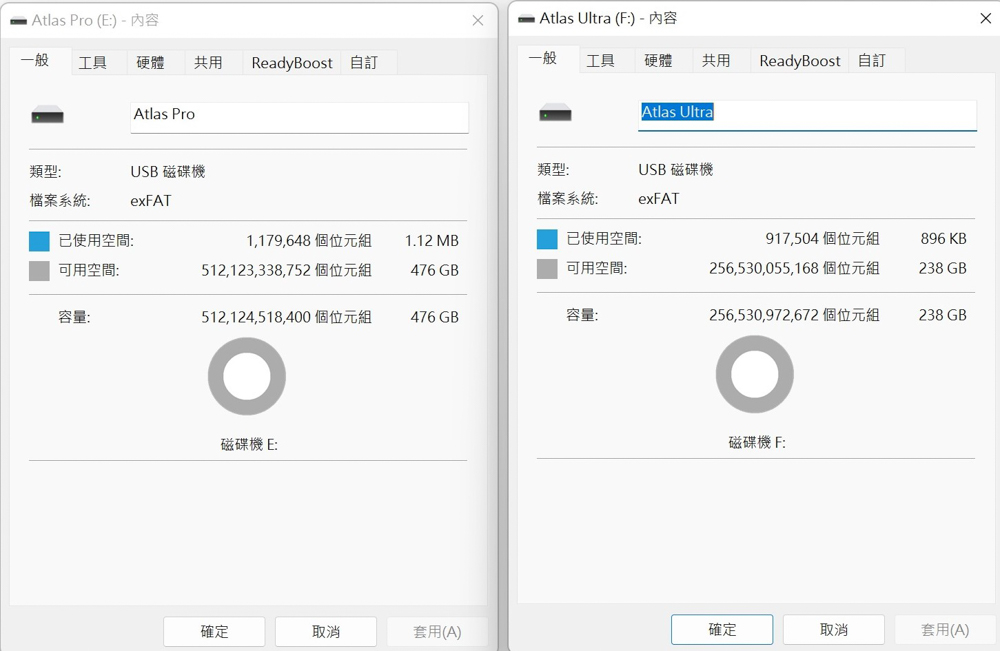
For evaluating the read-and-write performance of professional video multimedia files, the AJA System Test was used to simulate scenarios. The test was set with a file size of 1GB in 5120×2700 5K RED format. The ultimate results were as follows: the Atlas Pro achieved a write speed of 140 MB/s and a read speed of 242 MB/s, while the Atlas Ultra achieved a write speed of 247 MB/s and a read speed of 265 MB/s.
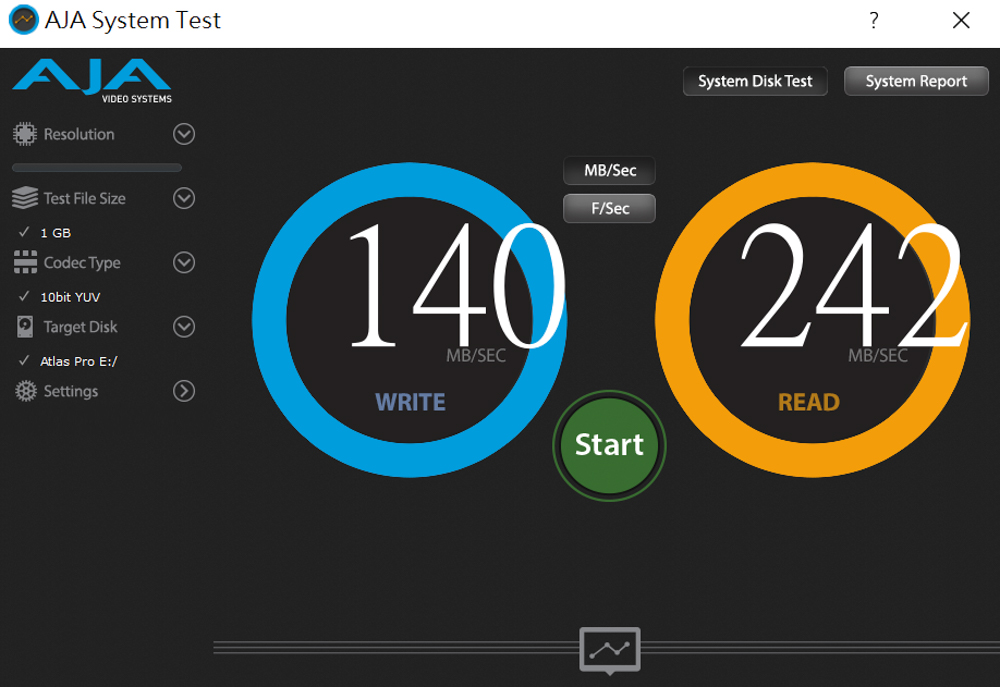
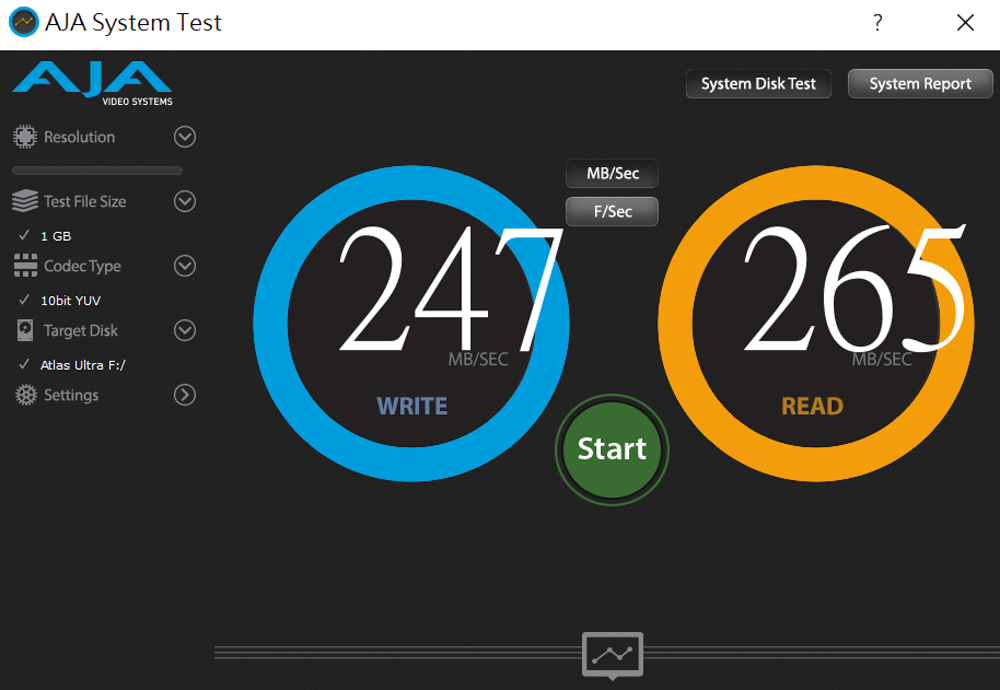
Next, we simulated a daily usage scenario by transferring photo and video files to the desktop and copying a media file folder to the SD card to complete the read-and-write tests. These media files consisted of 9.87GB ARW photo files and 35.4GB MP4 video files.
In the written test, where 9.87GB of ARW photo files (.ARW) were copied to both SD cards simultaneously, the Atlas Pro completed the task in 1 minute and 26 seconds, while the Atlas Ultra finished in 1 minute and 58 seconds.
In the reading test, where photo files were transferred from the SD card to the system desktop, the Atlas Pro took 40 seconds, and the Atlas Ultra took 39 seconds. The transfer speeds for both SD cards remained steady at around 245 MB/s and 260 MB/s, respectively, during the reading process.
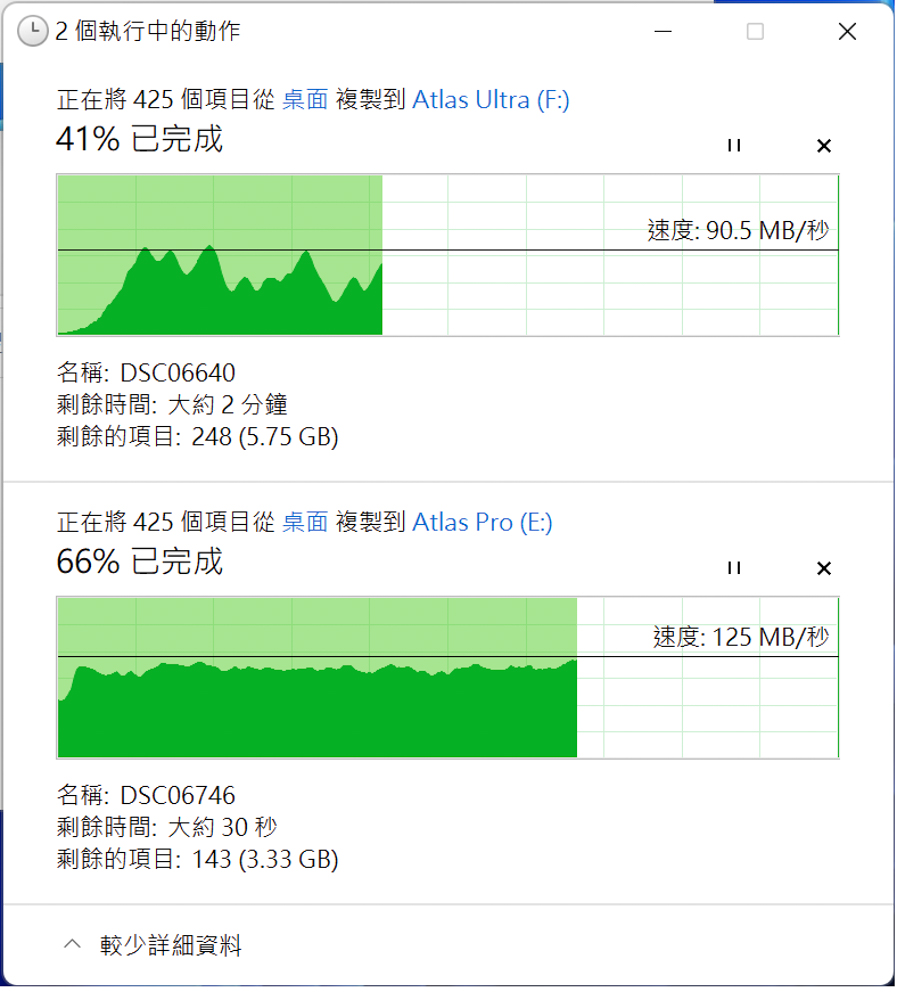
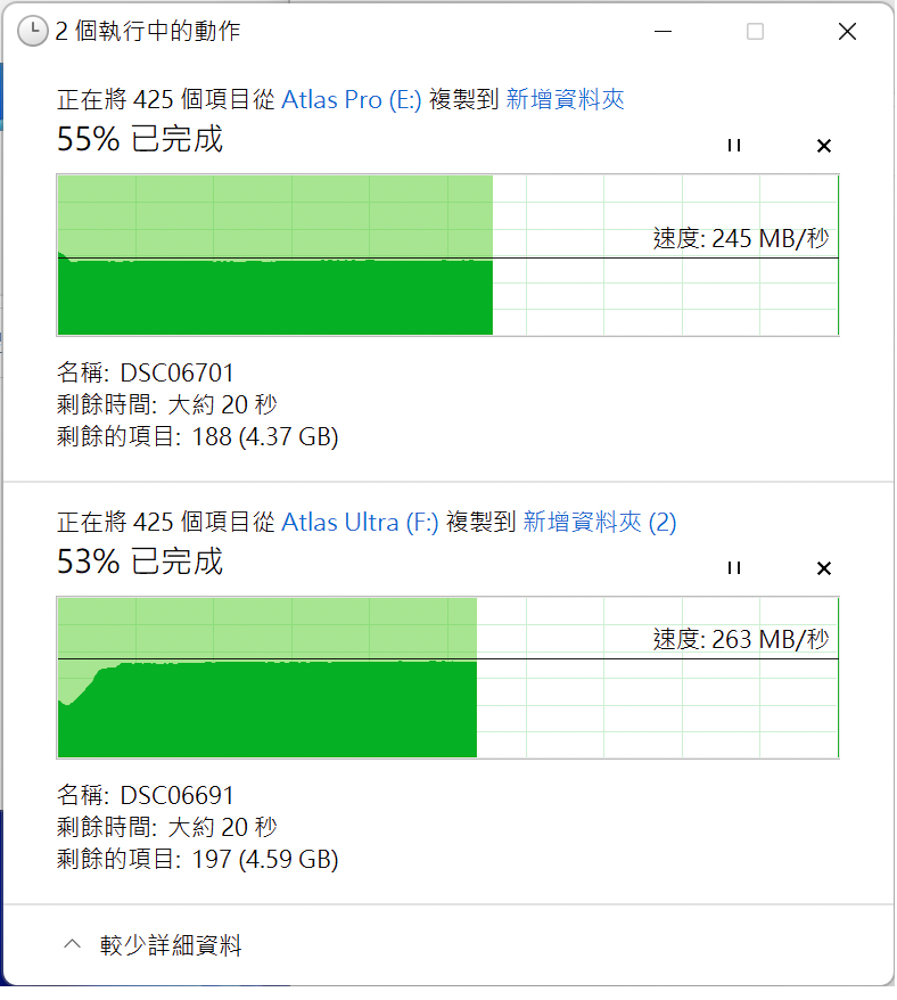
Beyond the photo file test, I also prepared a 35.4GB MP4 video file folder, which was copied onto both SD cards simultaneously. In the written test, the Atlas Pro completed the task in four minutes and four seconds, while the Atlas Ultra finished in two minutes and thirty-six seconds.
For the reading test, transferring video files from the SD card to the system desktop, the Atlas Pro took two minutes and twelve seconds, while the Atlas Ultra took two minutes and ten seconds. The transfer speeds remained consistent at around 286 MB/s for the Atlas Pro and 257 MB/s for the Atlas Ultra during the reading process.
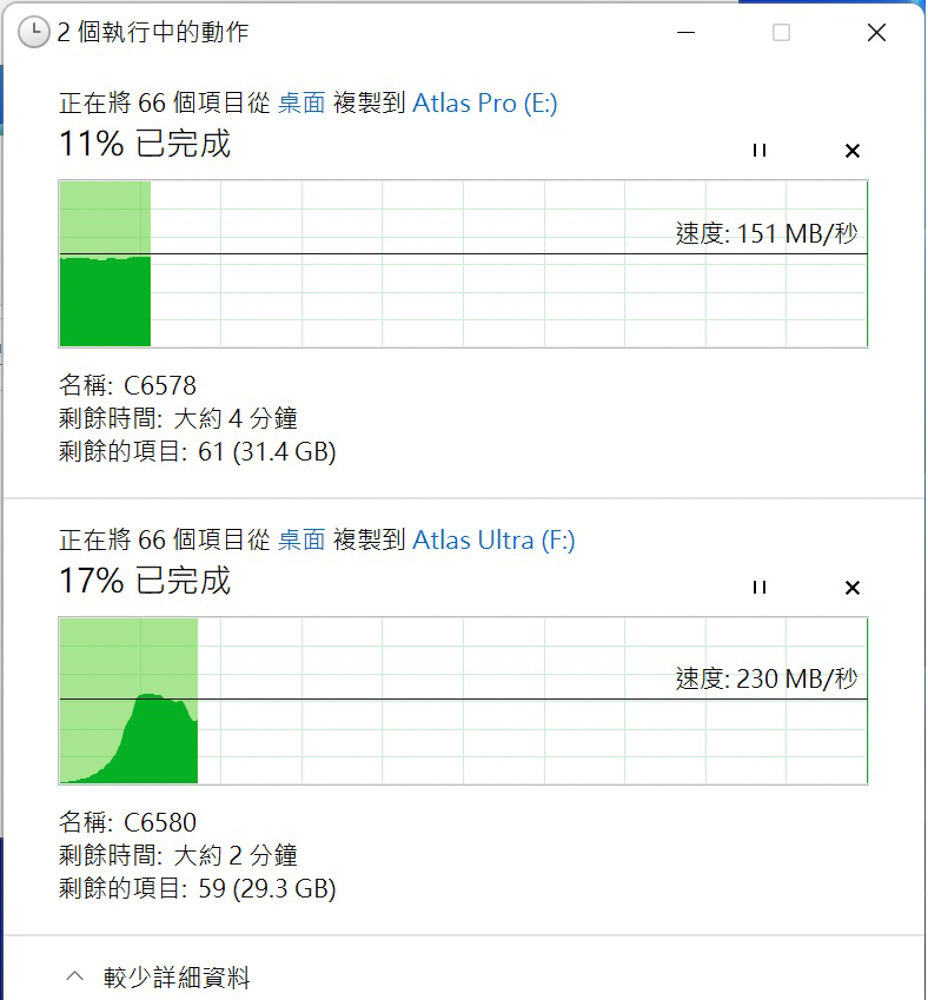
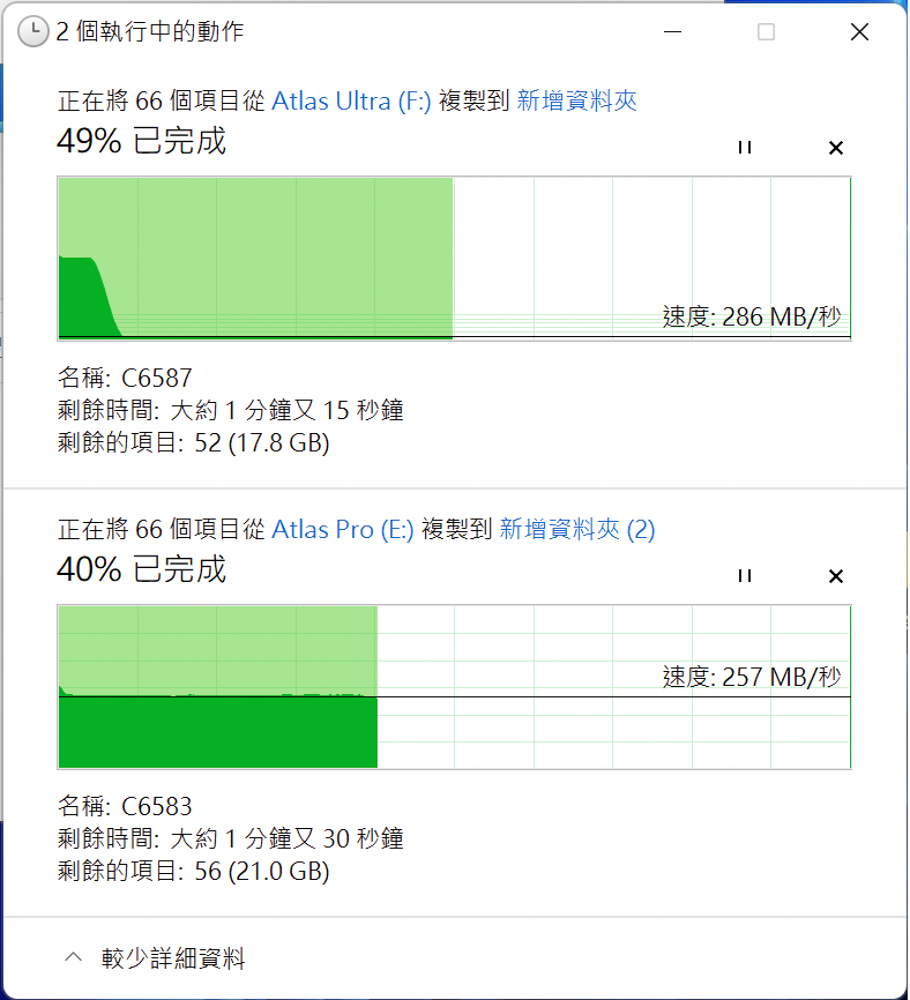
Summarize
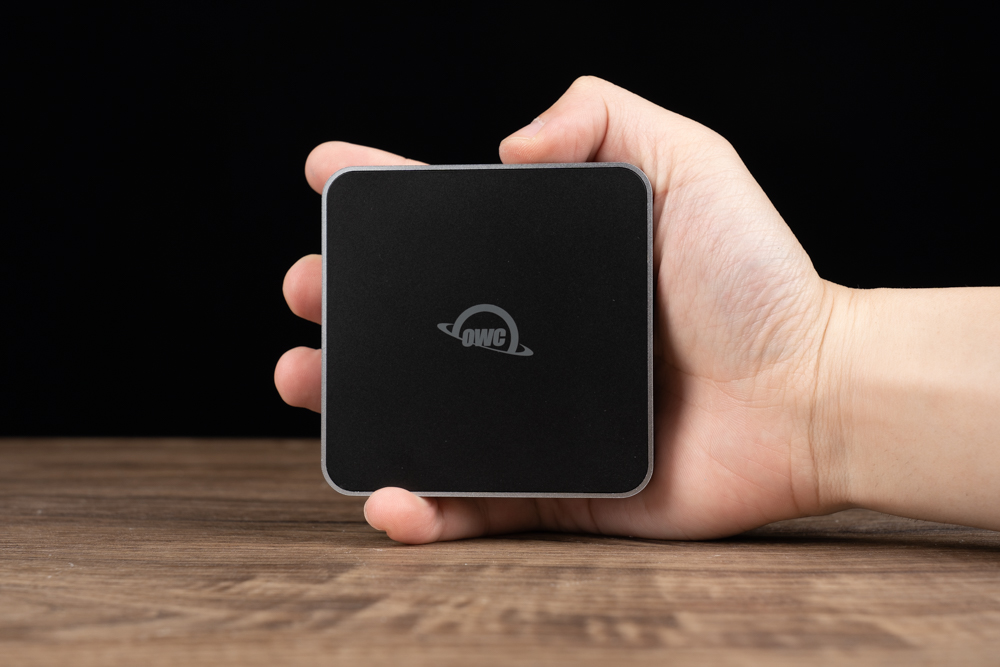
The OWC Atlas Dual SD Reader dual-slot card reader offers an efficient and user-friendly experience for users working with dual SD cards. In our tests, the reading performance of the two tested SD cards closely matched their specified ratings. Even when reading data simultaneously from both cards, there was no bandwidth contention leading to a drop in SD card reading performance.
The dual SDXC SD 4.0 UHS-II memory card slots were fully compatible with the two UHS-II SD cards tested. Furthermore, users can use OWC’s Innergize software to perform health checks on their SD cards and securely erase internal data more thoroughly.
Weighing in at just 140g, the OWC Atlas dual-slot card reader is lightweight, portable, and can easily be handled with one hand. It connects to your working device through a USB 3.2 Gen 2 (10Gb/s) Type-C port. The reader, which carries a two-year limited warranty, has a high-quality appearance. For those who often work with dual SD cards, this reader is an optimal choice for a superior work tool.
If this article is helpful for you, please share this article with your friends on social media. Thank you!
This article is based on the personality of the reviews. You are responsible for fact-checking if the contents are not facts or accurate.
Title: I’ll handle both of you single-handedly! Unboxing the OWC Atlas Dual SD Reader, a dual-slot card reader, allows for simultaneous use of two cards